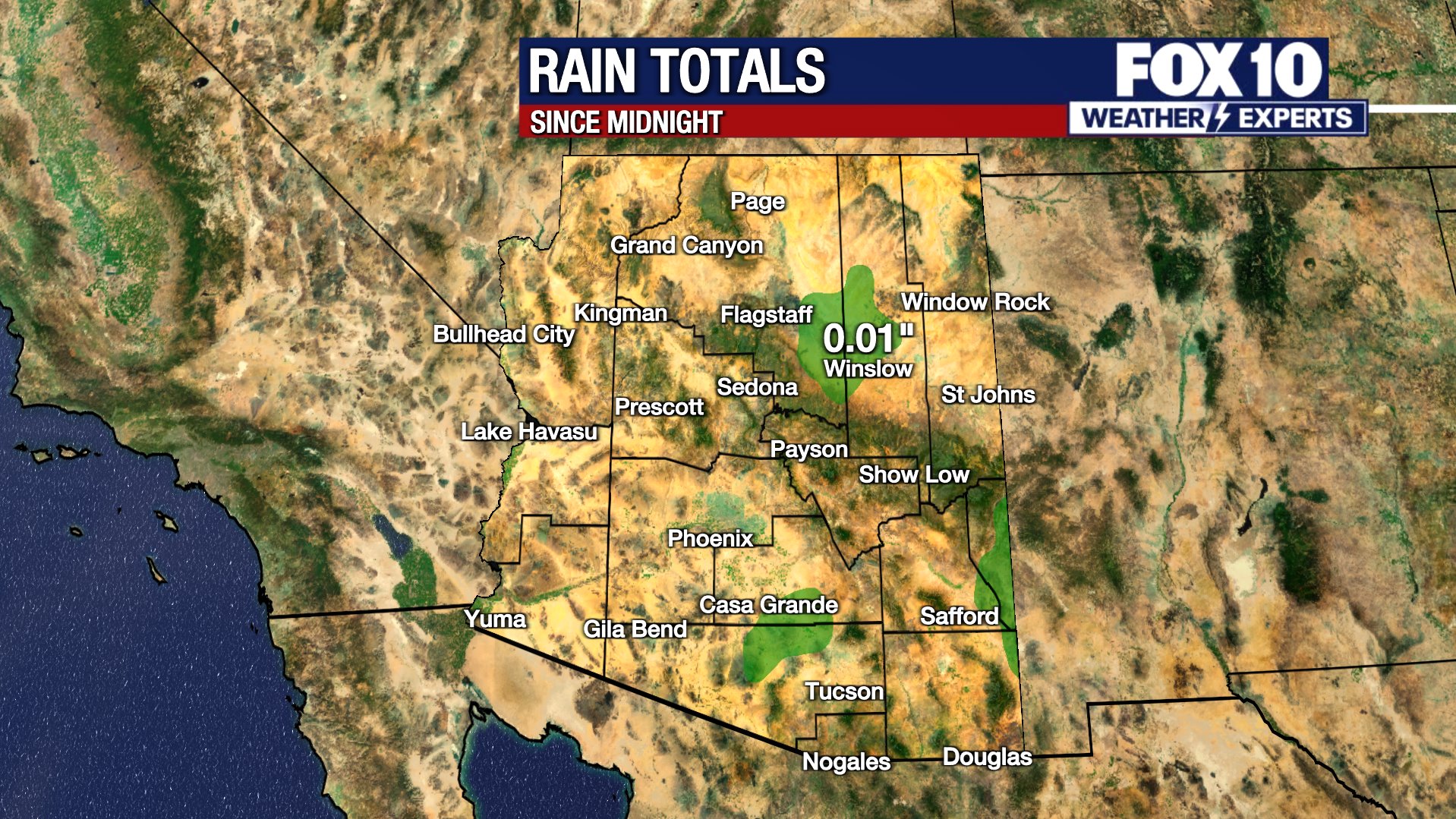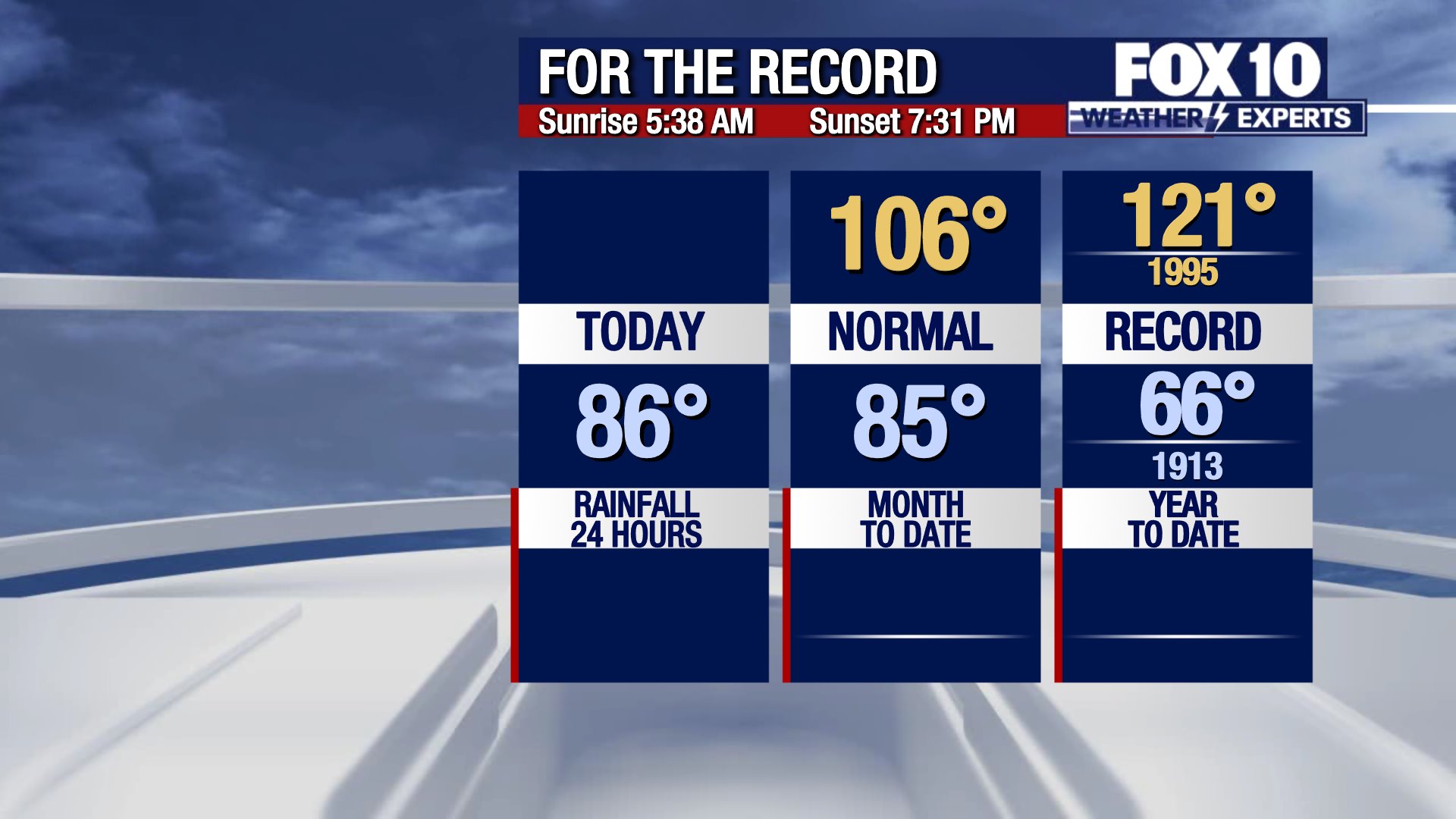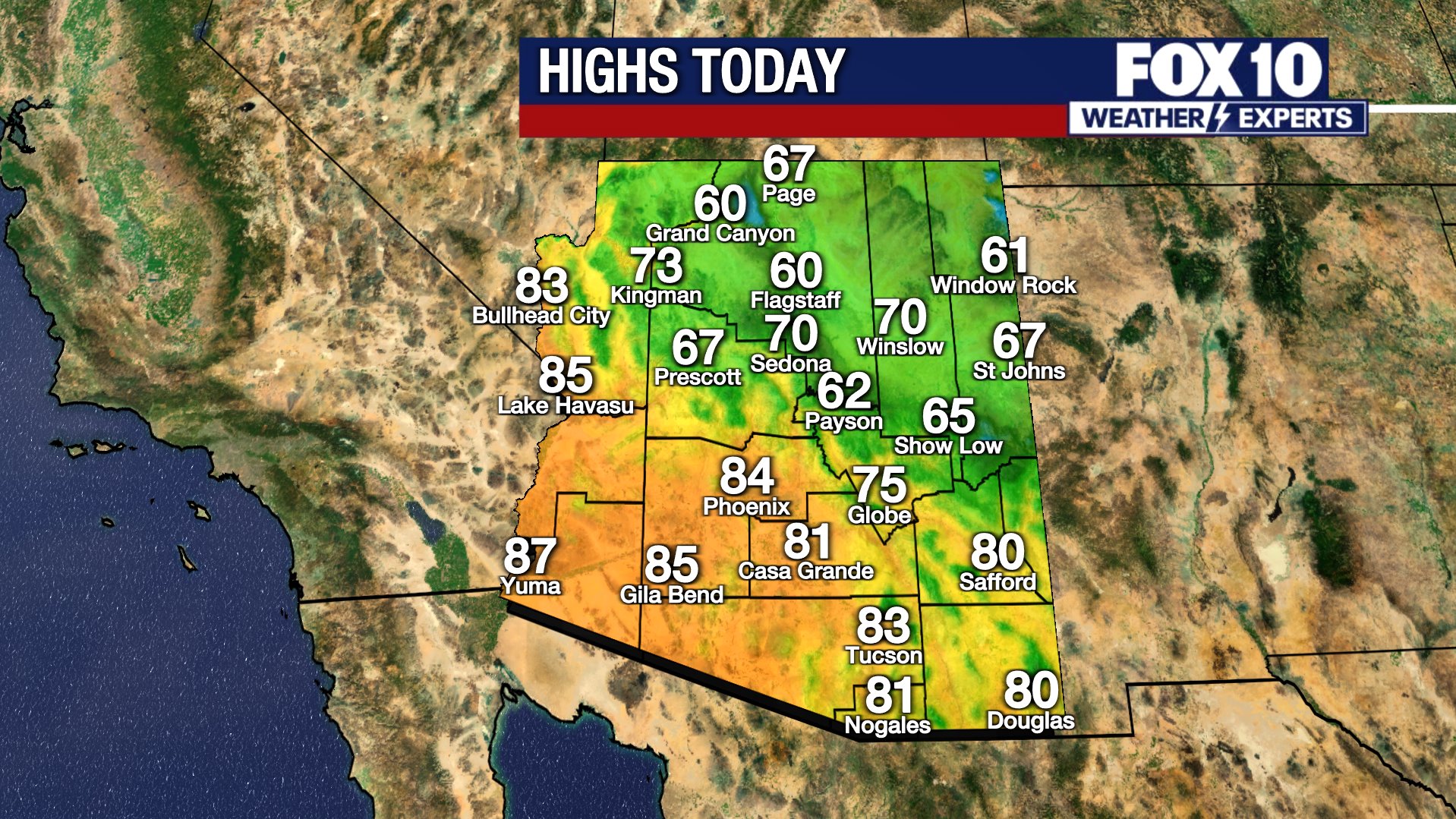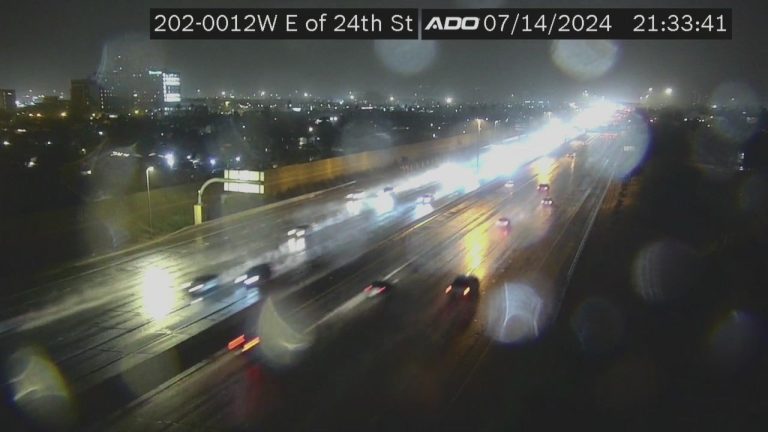Storms rolled through the Phoenix area Sunday night, with dust storms replacing rain.
The National Weather Service in Phoenix was tracking the storm throughout the day, which brought strong winds, hail, rain and some lightning.
At 8:30 p.m., a dust storm began to sweep through Phoenix after a damaging storm hit the southern area.
Shortly before 9 p.m., the National Weather Service said, “New storms are forming far south and north of greater Phoenix. More storms are expected to follow. Dust will also cover the entire valley from south to north.” “
Earlier Sunday, the National Weather Service said, “Storms are developing slowly over the mountains today, but gusty winds are expected to reach lower elevations in south-central Arizona later tonight. While a few storms are possible, There will be strong winds.
Just because there's a storm doesn't mean it's not hot. The low in Phoenix on Sunday was 89 and the high was 107.
In Flagstaff, severe thunderstorms are expected to continue overnight, bringing heavy rain and hail, the National Weather Service said.
5 PM Weather Forecast 7/14/24
Storms began to appear in Arizona. FOX 10's Cory McCloskey reports the latest weather conditions for Sunday.
–
You can check the latest weather conditions at any time by visiting the following website FOX 10 Phoenix Weather Pageor download the free FOX 10 Weather App, available at AppleiOS and Android.
Scroll down to view satellite and radar, schedule, records, current temperatures, 10-day forecast, forecast highs, recent rainfall totals, and live video.







The following heat safety information is provided by the Scottsdale Fire Department.
What is a heat emergency?
Heat Cramps: Profuse sweating, fatigue, extreme thirst, muscle cramps
Heat stroke: headache, dizziness, weakness, nausea/vomiting, cool/moist skin
Heatstroke: Increase in body temperature. +103 degrees, confusion/irrational behavior, dry/hot skin, shortness of breath, fast weak pulse (shock), seizure, unconsciousness
what to do
- Get person to shade or cool area
- Cool person, cool wet cloth (neck, groin, armpits, head) and body fan
- If the person is alert, drink cold water
- For muscle spasms, massage the muscle gently but firmly until it relaxes
- *If symptoms worsen, call 911
What not to do
- Do not give anything by mouth if the person is vomiting, unable to swallow, or unconscious
- Don’t underestimate the seriousness of heat emergencies
- Preparation for prevention/hiking/heat exercise
Know your limitations
- Hydration (start the day before the hike/exercise, one hour before the hike, during and after the hike)
- Wear appropriate clothing, light, light-colored, head protection, appropriate shoes
- Carry your mobile phone with you, preferably hiking together
- Be sure to tell someone where you are hiking and when you plan to return
Prevent heat stroke/heat stroke
The Arizona Department of Health Services says the following precautions can be taken to prevent heat exhaustion or heat stroke:
- Stay in an air-conditioned building
- Find a Cooling Center/Hydration Station
- Limit outdoor activities during the hottest hours of the day (noon)
- Check on at-risk friends, family and neighbors at least twice a day
- Drink water before, during and after working or exercising outdoors
- Check UV Index
- Check the Heat Risk Map
Driving in extreme temperatures
Arizona Department of Transportation tips for driving in extreme temperatures include:
Use sun protection: In addition to an umbrella, bring sunscreen and a wide-brimmed hat, and wear loose-fitting, light-colored cotton clothing.
come on: Keep the water tank three-quarters full. Running out of natural gas can be dangerous during extremely hot weather, especially in remote areas.
Hydrate: Bring a cooler to keep extra drinking water cold, and consider adding a few bottles of frozen water for cooling or thawing and drinking when needed. Make sure everyone, including pets, stays hydrated.
receive help: If your vehicle breaks down in extreme heat, seek assistance immediately to reduce wait time and run the air conditioner. If the air conditioner isn't working, roll down all windows.
Safe to wait: If the temperature inside the vehicle becomes too high, everyone, including pets, should carefully exit and find or create a shady area as far away from the driveway as possible. Be careful when walking on pavement, the temperature of the pavement may burn your skin. Wear shoes and try to keep your pet's paws off the sidewalk. If you're stopped on the highway, raise the front hood and turn on the hazard warning. Remember, parking in tall bushes can cause a fire.
Check your vehicle: Making sure your vehicle is in good operating condition can help avoid breakdowns and blowouts. Check your A/C and coolant levels, top up all important engine fluids, and make sure your battery is up to par. Check your tire pressure, as the combination of under-inflated tires and hot pavement can cause a blowout.
Be prepared for severe thunderstorms
Tips from the American Red Cross for preparing for severe thunderstorms:
- Prepare an emergency kit.
- Know your community's evacuation plan.
- Create a family disaster plan and practice it.
- Purchase a battery-operated or hand-crank radio
- Discuss thunderstorm safety with your family. Please note that thunderstorms may cause flooding.
- Choose a safe place in your home where family members can gather during a thunderstorm. This should be an area without windows, skylights, or glass doors that could be blown apart by strong winds or hail and cause damage or injury.
Be prepared and stay safe during monsoon
“Most valley residents know how fast and violent storms can move in and out, bringing strong winds, dust, rain and flash flooding. These storms can cause disruptions to services such as water, electricity and natural gas,” Capt. Ashley Lowe Ashley Losch of the Glendale Fire Department said.
GFD reminds residents ways to prepare and stay safe:
- Keep a flashlight with extra batteries on hand.
- Prepare foods that don’t require cooking or refrigeration to prepare.
- Have at least one gallon of clean water per person in the household.
- Provide backup power to anyone who needs power for medical equipment.
- Provides backup power for mobile phones that do not require charging.
- Have an easy-to-use first aid kit ready.
- Never drive into an area with running water; it only takes less than 10 inches to wash away a vehicle.
- Avoid flooded areas such as wash areas.
- If water levels rise, seek higher ground.
- Stay away from downed power lines, the ground can be energized up to 200 feet away.
- Keep pets indoors during storms.
more: https://azdot.gov/about/transportation-safety/severe-weather
Listen to FOX 10 Phoenix for the latest news
Watch FOX Weather's live national coverage
